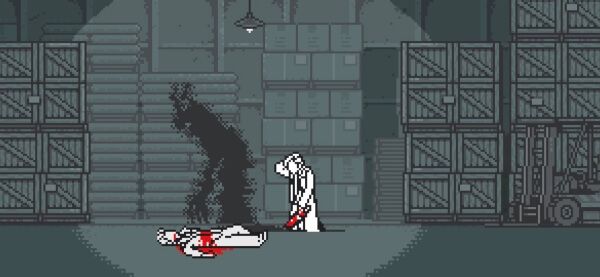🎮 和階堂真の事件簿 (Makoto Wakaido’s Case Files)
2023年 8月 20日
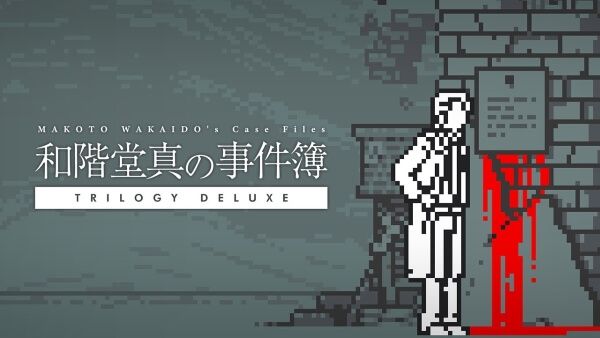
When the release of Detective Pikachu saw one of Japan’s most recognisable characters donning a deerstalker and brandishing a magnifying glass, it might have struck some people as an absurd direction to take the franchise, bordering on the surreal. But it shouldn’t be too surprising. Detective fiction has seen a much stronger and enduring popularity in Japan than the West, with tales of wits and deductive reasoning winning out against violence or brute force found in all kinds of Japanese media, from the novels of Edogawa Rampo to manga titles like Detective Conan.
And these kinds of stories have been a cornerstone of Japanese games since the beginning, with early and influential titles like The Portopia Serial Murder Case and Famicom Detective Club inspiring a generation of developers and modern series like Danganronpa and Ace Attorney becoming fan favourites both domestically and abroad. The Japanese market enjoys a steady flow of releases in the genre compared to the comparatively sparse pickings that Western fans have to choose from.
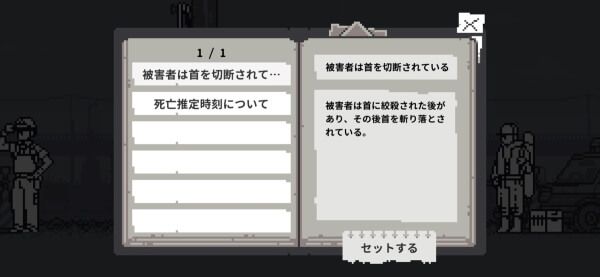
Makoto Wakaido’s on the case!
Indie games are no exception! 和階堂真の事件簿 (Makoto Wakaido’s Case Files) by 墓場文庫 (Hakaba Bunko) is a series of three games in which you adopt the role of the titular detective and sleuth your way to the bottom of various grisly homicides. Their atmospheric music and evocative pixel art make for a unique experience, but a big selling point is that each game is a concise, self-standing story that can be finished in an hour or two, and not a 40-hour slog or an endless, procedurally-generated Skinner box.
There’s a lot of variety in how mystery games tie gameplay and story together. Some games—your Zero Escapes and 428: Shibuya Scrambles—see you grapple with the mystery directly, complete with branching stories and multiple endings. Others—such as Higurashi When They Cry and similar visual novels—operate more like traditional stories, with audio and visual elements used to illustrate or add emotional weight to a conventional linear narrative. The Makoto Wakaido games fall somewhere in between these two extremes. They have only one ending and no true fail-states, but the player gets to engage with the story interactively and directly guide the protagonist through the process of identifying the culprit.

Interrogate witnesses and piece together clues to open new paths of inquiry.
The gameplay itself is pretty straightforward. Each chapter of the story is broken up into two phases: investigation and deduction. The investigation phase works a little bit like a point-and-click adventure. You move around a scene, inspecting things and questioning witnesses, gathering clues that you add to your notebook. These clues are things like physical evidence or statements from witnesses, which can then be equipped to unlock new options when inspecting things or new avenues of questioning when talking to people.

Gather clues and correctly answer questions in the Deduction phase to synthesize your information and solve the case.
Once you’ve gathered all the clues in the Investigation phase, you move on to the Deduction phase. This is essentially a quiz of what’s happened so far. You’re asked a series of questions about the crime, and can present any of the clues you’ve gathered as answers. It might sound like everything grinding to a halt every 15 minutes for a pop quiz would slow things down, but the chance for review and retrospection can be surprisingly welcome. Another advantage is that the story can move along at a swift clip without having to worry about dropping too many hints or reminders since the game already knows that you’ve worked out certain facts. And lastly, at the end of the Deduction phase, having now proven what you’ve deduced, any clues that are no longer necessary are removed from your notebook. This keeps the gameplay from getting too fiddly—you won’t find yourself scrolling through dozens of clues to find the right one.
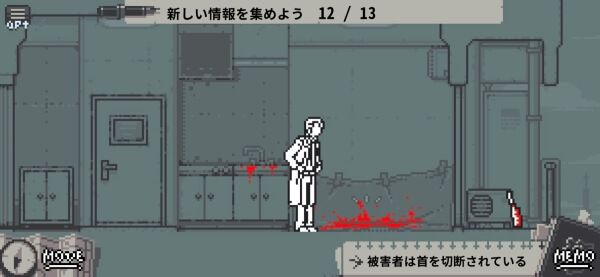
Splashes of bright red blood in the otherwise monochrome settings draw the eye and add a dramatic flare to crime scenes.
The presentation of the games is great. The music is solid but doesn’t show off, and does a lot to set the scene in each area without being distracting or annoying. The artwork is also amazing. These games have brilliant pixel art that is beautiful and stylistic while still being practical and easy to understand. Each game is almost entirely in monochrome, with muted grayscale backgrounds, but stark black-and-white characters and items, so it’s always clear exactly what you can and can’t interact with. However, the art breaks from the strict monotone colour scheme in a few key places: blood is always shown in bright red, which makes murder scenes striking—almost shocking—while still leaving things mostly to the imagination.
As for the storylines of the games, each is distinct and self-standing. You could play the games in any order you like and not miss out on any important context. Not only that, but each game represents a different sub-genre of murder mystery.
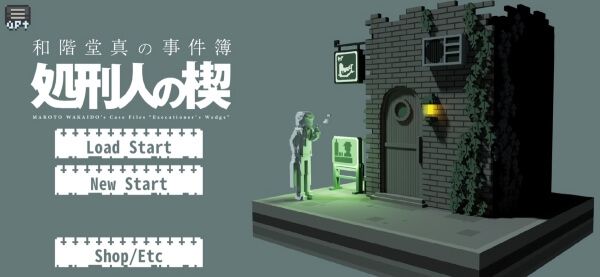
Episode 1: 処刑人の楔 (Executioner’s Wedge)
The first game, 処刑人の楔 (Executioner’s Wedge) plays out like a TV police procedural. The decapitated body of a John Doe is discovered, with the MO matching that of a known serial killer: a strange sigil painted in blood near the body, hinting at the involvement of a religious cult. By tracing the victim’s steps in the hours leading up to the murder, you identify the victim, discover a prime suspect, and try to track them down before they strike again or slip away.

Episode 2: 隠し神の森 (Bogeyman’s Woods)
The second game and my personal favourite, 隠し神の森 (Bogeyman’s Woods), is much more like a classic detective novel. In a remote mountain village, the heir to a wealthy family has been found dead. There are plenty of suspects right from the beginning. The other members of the family all potentially stand to benefit from the death in some way or another. There’s an in-game family tree to reference, rumours of a dark secret hanging over the family, and even a locked room is involved. It’s like a wonderful pastiche of all the different Kosuke Kindaichi novels, and it references countless classic murder mystery tropes while still managing to have its own personality and charm. The gameplay is less linear than the first game, with a map of various locations that you’ll find yourself backtracking between as you cross-reference people’s statements and alibis against each other.

Episode 3: 影法師の足 (Phantom’s Foot)
If Bogeyman’s Woods feels like a murder mystery in the style of Seishi Yokomizo, the third game, 影法師の足 (Phantom’s Foot) is in the style of Raymond Chandler: a gritty neo-noir in which our hero awakens with amnesia and is standing over a bloody corpse, the murder weapon in his hands. Surely, you must have been framed! You manage to find your way back to your apartment and from there attempt to retrace your steps to discover the events leading up to the murder…
All three games are entertaining in their own right, and adhere to the series’ core idea of presenting a solid, concise story with no filler or padding. They’re currently only available in Japanese, but all three are free to download for iOS and Android, and are monetised by either donation or (extremely infrequent and unobtrusive) advertisements. If you’d rather play in English, there’s a Steam version in the works with a full English translation, slated for release in the 4th quarter of 2023. And it even seems to include a fourth game: 指切館の殺人 (The Weeping Hand Manor), which I’m eagerly awaiting.
